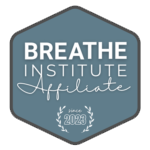 San Francisco and Marin CA
San Francisco and Marin CA
Whether you are an infant, an older child or an adult, if you are living with a tongue tie, Glen Park Dental can help. Dr. Kimberlee Dickerson specializes in the diagnosis and treatment of tongue ties. That treatment typically entails releasing the tongue tie by performing a procedure known as a frenectomy, using our soft tissue laser. This procedure restores the full range of motion in the tongue. What happens, however, after the frenectomy? This page provides information on after care protocols following the completion of a frenectomy.
The benefits of laser dentistry
By completing this procedure with our dental laser, as opposed to severing the restricted lingual frenum in a traditional surgery performed by hand, your risk of complications lowers considerably. The laser is so precise that it can vaporize extremely small areas or groups of cells. Furthermore, the laser immediately cauterizes and seals the treated area. That means less bleeding, shorter treatments and a significantly reduced risk of infection. In fact, we can complete a laser frenectomy in just a few seconds.
Pain management
You will receive a local anesthetic at the beginning of a frenectomy. Once the anesthesia wears off, you may feel mild discomfort, but this usually can be managed by taking an over-the-counter pain reliever such as Tylenol or Ibuprofen. Certain home remedies can help manage pain for infants.
These include:
- Ice chips made of frozen breast milk
- Chilled organic coconut oil
- Chamomilla boiron camilia.
You may notice the tissue at the site of the frenectomy has a yellowish hue or bad-smelling breath following the procedure. These two conditions are especially prevalent among infants who have a tongue tie released. Rest assured, both yellowish skin and bad breath are normal and not signs of an infection.
After care regimen
We usually recommend a diet of soft, cold foods in the first few days for anyone who undergoes a frenectomy. The patient also should avoid any spicy or especially chewy foods. Each patient or family receives detailed instructions on what to do after a frenectomy. For older patients, these instructions usually ask the patient to rinse with salt water or mouthwash multiple times each day.
Although the risk of infection is minimal, be sure to watch out for potential warning signs of an infection.
This may include:
- New, persistent bleeding
- Numbness
- Pain that persists through over-the-counter medication or home remedies
Myofunctional therapy
Although most tongue ties are released during the first year of a patient’s life, many individuals live with limited movement in the tongue into childhood or adulthood. In these situations, a person often develops negative habits to compensate for the restricted range of motion in the tongue. These habits can impact the way a person eats, breathes and speaks, and do so without the person realizing the true cause for any issues they are having. This is why Glen Park Dental often prescribes myofunctional therapy following a frenectomy. Myofunctional therapy entails performing simple exercises that work the tongue and the musculature of the face and mouth. Performed regularly, myofunctional therapy re-trains these muscles and corrects these aforementioned bad habits.
Releasing tongue ties in San Francisco and Marin, California
Having a tongue tie released with a frenectomy is just part of the solution. If you have any questions about frenectomy after care or any other aspect of this process, schedule a consultation at Glen Park Dental. Just call (415) 585-1500 or complete our appointment form online.


